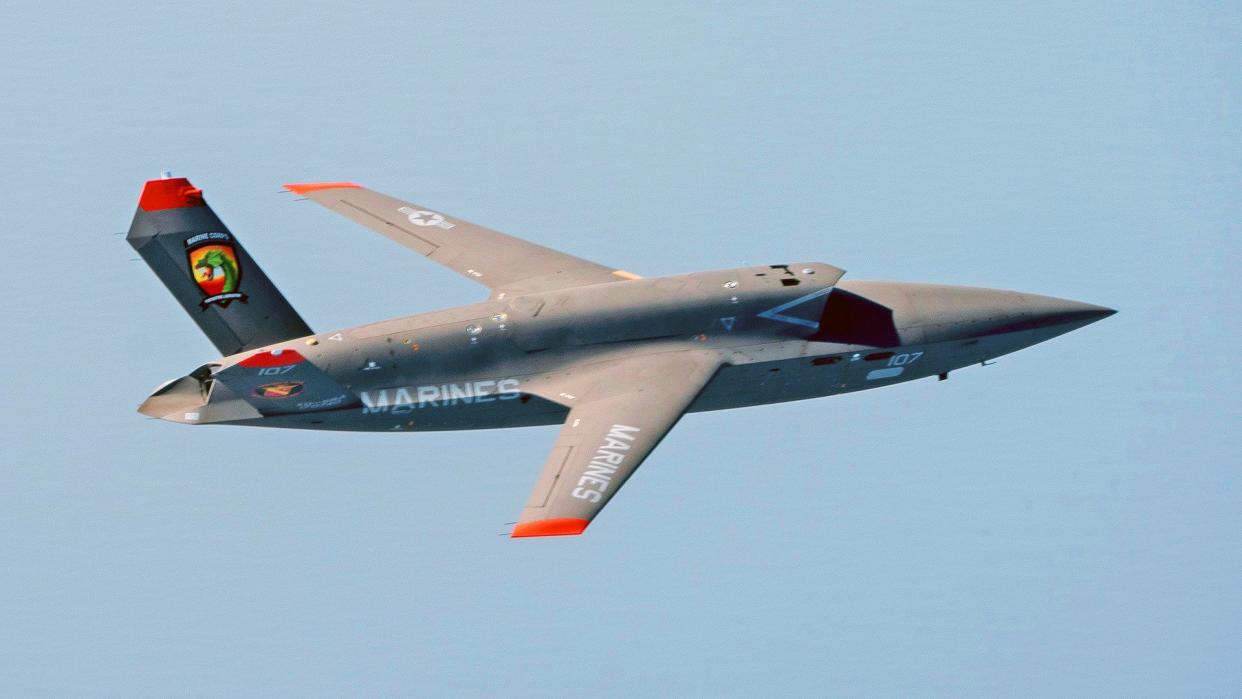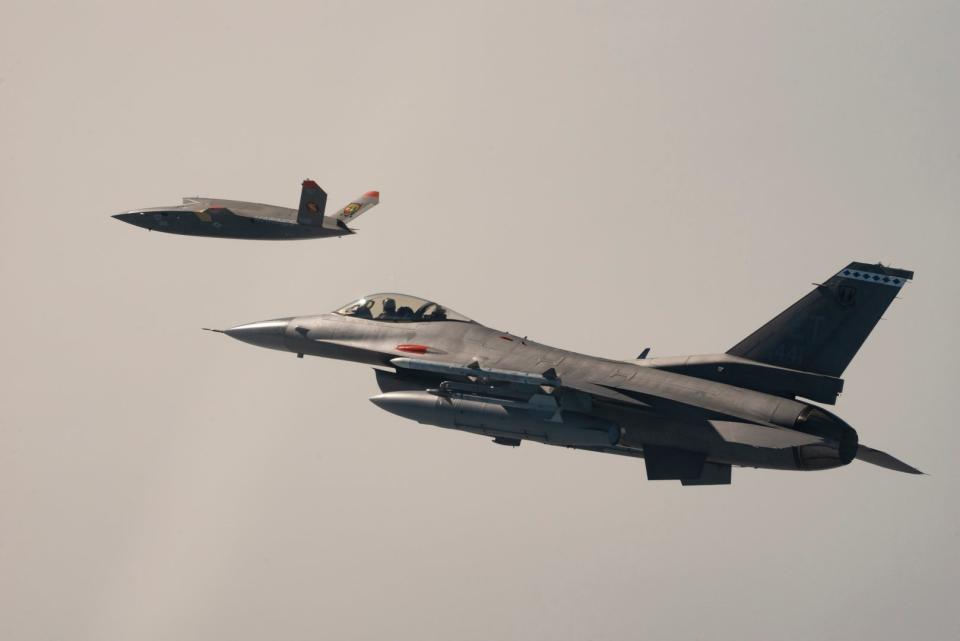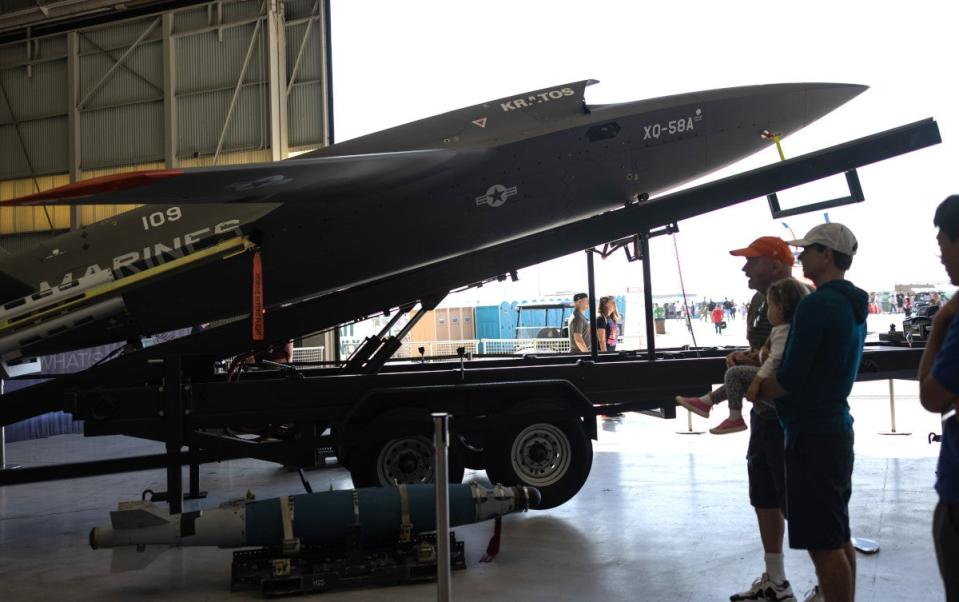XQ-58 Valkyrie Is Now Flying With The Marine Corps

The U.S. Marine Corps has begun flying its stealthy Kratos' XQ-58A Valkyrie drones, making it the second known operator of the type beyond the U.S. Air Force. The Marines now plan to evaluate the drones as highly autonomous surveillance and reconnaissance assets, electronic warfare platforms, and wingmen for crewed fighters, including in kinetic roles.
The first flight of a Marine XQ-58 took place on October 3, the service announced today. The drone was launched from Eglin Air Force Base in Florida. The test flight was conducted in cooperation with the Air Force's 40th Flight Test Squadron, part of the 96th Test Wing at Eglin, and the U.S. Navy's Naval Air Warfare Center Aircraft Division (NAWCAD), part of Naval Air Systems Command (NAVAIR). The Office of the Undersecretary of Defense for Research and Engineering, or OUSD(R&E), has also been involved in the Marine Valkyrie program.
https://www.youtube.com/watch?v=t0GKziW5uGs
As can be seen in the video above, the XQ-58 is a completely runway-independent design that uses a rocket-assisted takeoff method via a static ground-based launcher. The drone uses a parachute recovery system to get back on the ground, with inflatable airbags helping to cushion it when it touches down.
According to Kratos, the XQ-58, with its 30-foot overall length and 27-foot wingspan, has a maximum range of around 3,000 miles and a maximum launch weight of 6,500 pounds (including up to 600 pounds in its internal payload bay and/or another 600 pounds under the wings). It has a subsonic cruising speed of Mach 0.72 and can hit an absolute top speed of around Mach 0.85.
"This XQ-58A test flight and the data collected ... not only help to inform future requirements for the Marine Corps," Scott Bey, a prototyping and experimentation portfolio manager at OUSD(R&E), said in a statement about the October 3 sortie. “It fuels continued joint innovation and experimentation opportunities and demonstrates the agility that can be achieved through partnership.”
The 40th Flight Test Squadron had already been operating Valkyries from Eglin, primarily to support the development of artificial intelligence and machine learning-driven autonomous flight systems, since its receiving its first examples last year. The Air Force oversaw the type's first ever flight back in 2019.
https://www.youtube.com/watch?v=QrJmG1g4mFI
NAVAIR finalized a contract in January with Kratos to buy the pair of Valkyries on behalf of the Marine Corps in support of a program called the Penetrating Affordable Autonomous Collaborative Killer-Portfolio (PAACK-P). The Marine Corps currently expects PAACK-P to feed into the Tactical Aircraft (TACAIR) component of its larger Marine Air-Ground Task Force Unmanned Aerial System Expeditionary drone program, or MUX.
The Marines took delivery of the first of two XQ-58s in March, according to a press release the service put out today. Based on modex numbers, the service received the second one sometime after that.
A video and a pair of pictures the Marine Corps released from the October 3 test flight, seen at the top of this story and below, show a Valkyrie the modex number 107.

Additional pictures from the 2023 Marine Corps Air Station Miramar Airshow last month, like the one below, show the other Marine XQ-58, which has the modex number 109.

The Marine Corps has at least six more test flights already planned for its XQ-58s as part of PAACK-P.
These flight tests have "objectives that include evaluating the platform’s ability to support a variety of intelligence, surveillance, and reconnaissance (ISR) missions; the effectiveness of autonomous electronic support to crewed platforms; the potential for AI [artificial intelligence]-enabled platforms to augment combat air patrols; and continuing to mature other manned-unmanned teaming (MUM-T) capability objectives," according to the Marine Corps' press release.
Whether or not any of this testing will involve the release of weapons or other stores is unknown. However, the Marine Valkyrie at the 2023 Miramar Airshow was on display alongside a pair of inert AIM-120 Advanced Medium-Range Air-to-Air Missiles (AMRAAM) and an inert 500-pound-class Joint Direct Attack Munition (JDAM) precision-guided bomb, as can be seen in the social media post below.
https://twitter.com/lfx160219/status/1708733416554844244?s=20
Earlier this year, Kratos' President and CEO Eric DeMarco disclosed that the Valkyrie's ability to fly electronic warfare missions alongside stealthy crewed F-35 Joint Strike Fighters was a key area of interest to the Marines.
Whether or not the Marines ultimately pursue the XQ-58, or a variant or derivative thereof, as an operational platform remains to be seen. As it stands now, PAACK-P is an experimentation effort only to help the service refine its future drone requirements.
"This purchase is part of ongoing USMC efforts to look at future autonomous collaborative platforms," Maj. Jay Hernandez, a Marine Corps Aviation spokesperson, told The War Zone in a statement back in January. "The base contract was awarded primarily for the baseline aircraft – a decision for future modifications and operations has not been made as these aircraft are for experimental use."
That being said, the XQ-58 design specifically does have attributes that would be incredibly attractive for the Marine Corps, especially its runway independence and its readily deployable nature. Kratos has even shown a fully containerized launch system for use with Valkyrie in the past. The drones low-observable characteristics and its generous 3,000 mile range are also very applicable to the Pacific theater.
https://twitter.com/StrikeWriter/status/1184585304960917506
The Marines have been radically reorganizing their entire force structure in recent years around new operating concepts that focus heavily on rapid deployability and the ability to conduct sustained high-end operations at forward locations, including ones that are remote or austere. Marine aviation units, including those equipped with F-35B Joint Strike Fighters that future Marine drones could be teamed up with, are central to this new expeditionary and distributed operations vision.
“The Marine Corps constantly seeks to modernize and enhance its capabilities in a rapidly evolving security environment,” Marine Corps Lt. Col. Donald Kelly, a member of the Headquarters Marine Corps Aviation office said in a statement in today's press release. "Testing the XQ-58 Valkyrie determines requirements for a highly autonomous, low-cost tactical UAS [uncrewed aerial system] that compliments the need for agile, expeditionary, and lethal capabilities in support of both the Marine Corps’ stand-in force operations in austere environments and the Joint Force."
The Marine Corps is, of course, not the only service to be looking at an increasingly uncrewed future, especially in the air. As already noted, Eglin has become a major hub for Air Force autonomous aircraft testing efforts, including those involving its XQ-58s, which are feeding into its Collaborative Combat Aircraft (CCA) program. The Navy is also expecting to integrate more and more drones into its carrier air wings and with regard to operations involving other types of ships.
https://www.youtube.com/watch?v=_xuVfA6bN3c
In addition, the Air Force and the Navy are actively collaborating on relevant technologies that apply to both services. This includes systems that will allow them to exchange control of each others' drones back and forth during future operations. This is all undoubtedly of interest to the Marines, as well.
All told, how the Marine Corps' particular drone requirements continue to evolve as a result of testing its XQ-58s as part of the PAACK-P program remains to be seen. No matter what, the service has now taken an important step forward with its recent first test flight
Contact the author: joe@thedrive.com

